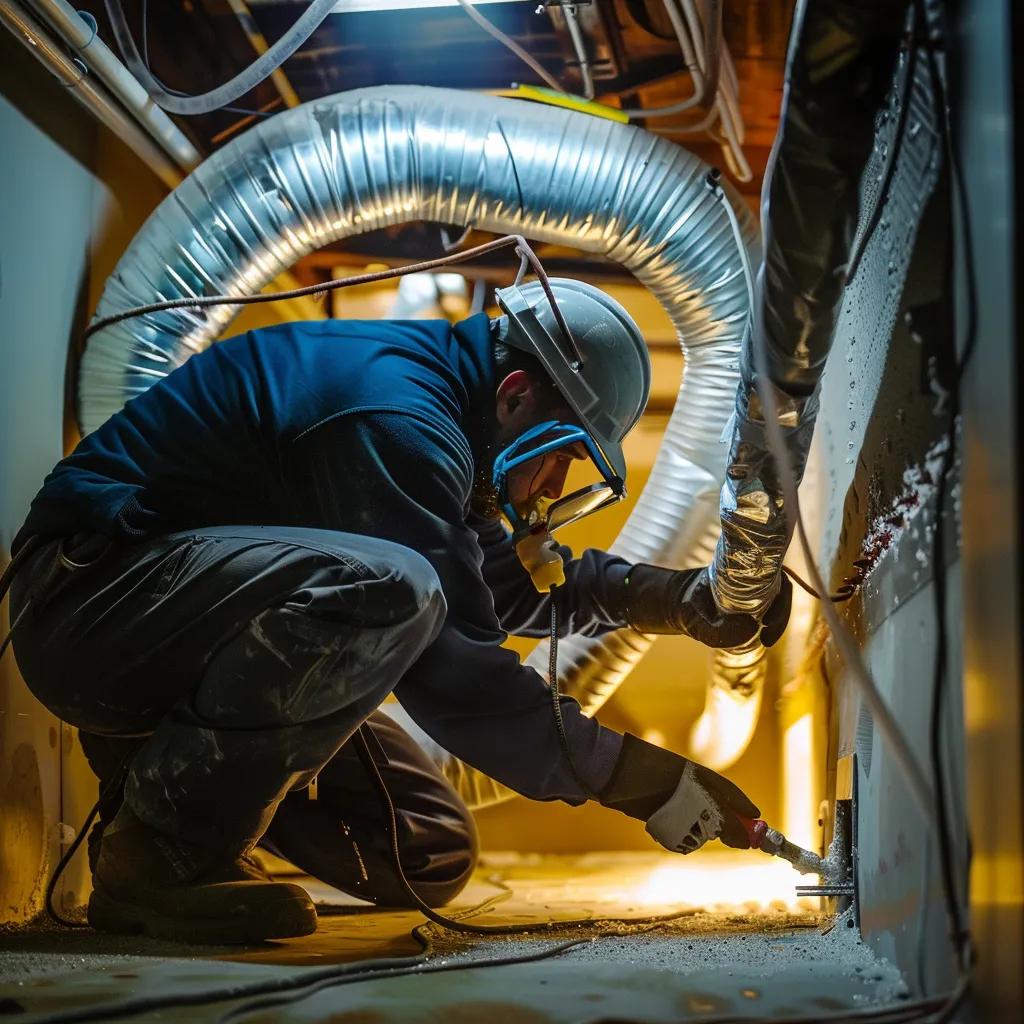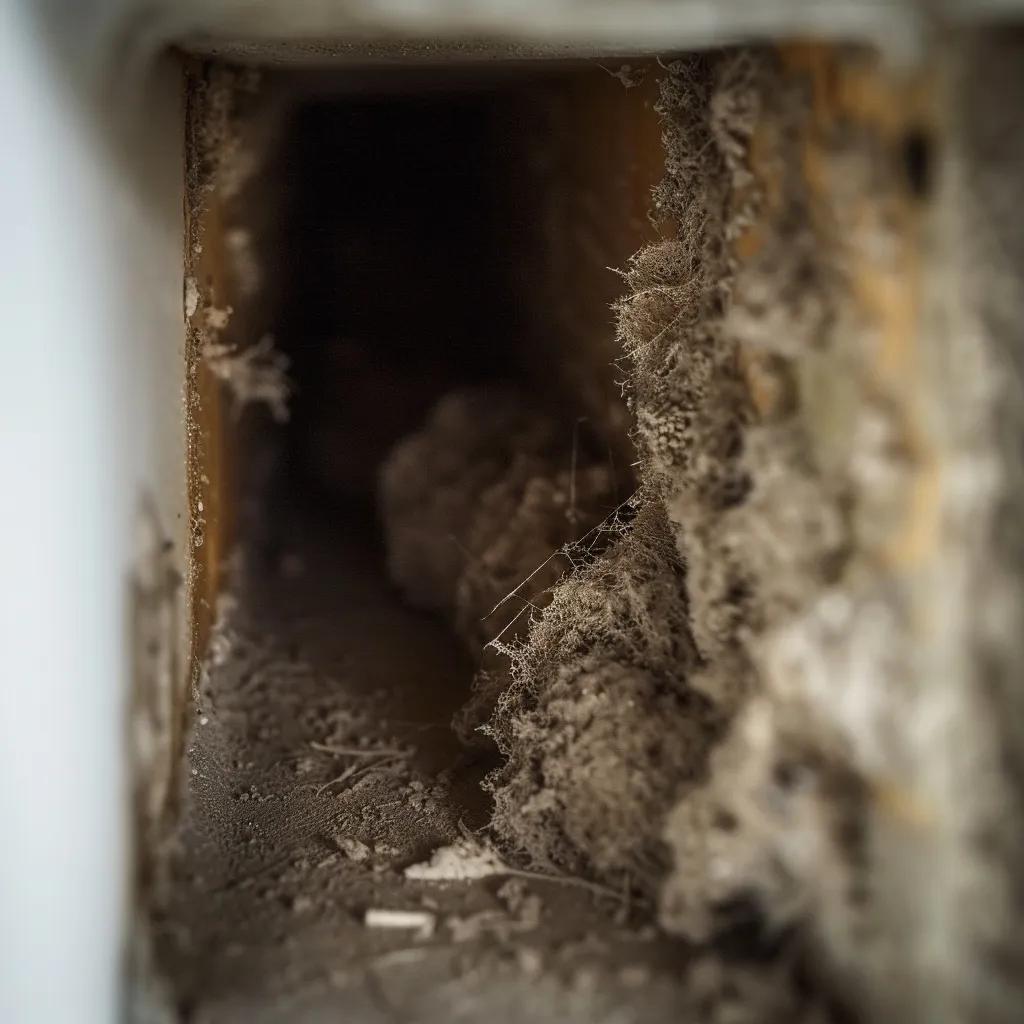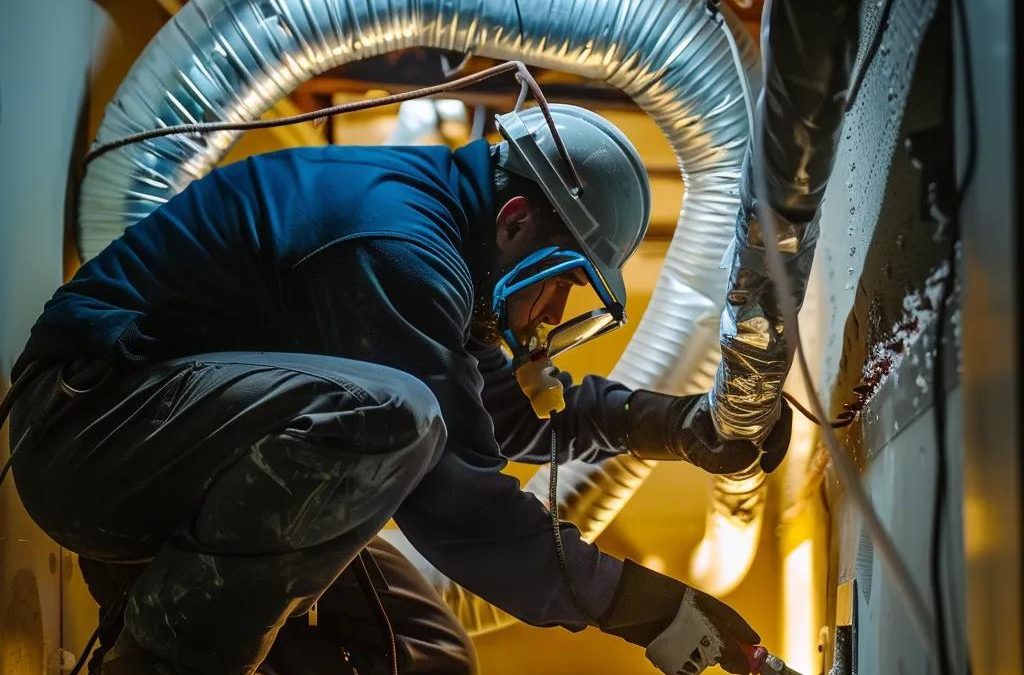
Why HVAC Cleaning Is Crucial After Water Damage: Essential Guide for Water Damage Restoration NYC

Water intrusion in an HVAC system can turn air ducts into mold incubators within 24–48 hours, compromising indoor air quality and system performance. This guide reveals why HVAC cleaning after water damage is essential for health, efficiency, and compliance with insurance requirements in New York. Ignoring moisture leads to mold colonization, increased allergens, and escalating repair costs. You’ll discover the common causes of HVAC water damage, the health risks of contaminants, the professional cleaning process, repair-versus-replace criteria, prevention tactics, insurance coverage details, and cost estimates—all aligned with top water damage restoration NYC practices by Restoration Experts.
What Are the Common Causes of Water Damage in HVAC Systems?
Water damage in HVAC systems occurs when moisture sources overwhelm components, leading to leaks, corrosion, and biological growth. Understanding these origins helps property managers and homeowners detect issues early and pursue timely water damage restoration NYC services.
How Do Floods and Leaks Affect HVAC Components?
Floodwater intrusion and hidden leaks saturate duct insulation, damage electrical controls, and warp metal coils through prolonged exposure.
- Floodwater carries debris and contaminants deep into ductwork.
- Burst pipes introduce high-pressure water that deforms panels and wiring.
- Roof or wall leaks seep into attic or crawlspace HVAC units, corroding drip pans and mounts.
These damages set the stage for mold growth and air quality decline, prompting professional extraction and component restoration.
What Role Does Condensation Play in HVAC Water Damage?
Condensation forms when warm, humid air contacts cold evaporator coils, creating 20–50 gallons of water daily that must drain properly. Improperly pitched drain pans or clogged condensate lines cause water to pool, rust drip pans, and seep into duct seams. Over time, trapped moisture accelerates metal corrosion and fosters fungal colonies inside coils and plenums, requiring thorough dehumidification and sanitization.
How Quickly Can Mold Develop After Water Exposure in HVAC?
Mold can establish visible colonies within 24–48 hours of moisture exposure in damp duct surfaces.
- Spores land on wet fiberglass, ductboard, or insulation and germinate rapidly.
- Stagnant water and high humidity create ideal conditions for spores to multiply.
- Visible black or green patches appear on coil fins, drip pans, and duct interiors.
Early intervention through professional HVAC cleaning halts mold spread and protects indoor air quality.
What Are the Health Risks of Mold and Contaminants in Water-Damaged HVAC Systems?

Mold and microbial growth in water-damaged HVAC systems release spores and bacterial fragments that degrade indoor air quality and trigger health issues. Recognizing these hazards underscores the importance of prompt air duct cleaning and mold remediation.
How Does Mold in HVAC Systems Affect Indoor Air Quality?
Mold spores circulate through ductwork and disperse into living spaces, reducing air purity and causing musty odors. Airborne allergens accumulate on filters and diffusers, elevating particulate counts and lowering ventilation efficiency. Restoring clean airflow through professional HEPA vacuuming and sanitization restores healthy indoor environments.
What Respiratory and Allergy Symptoms Are Caused by HVAC Mold?
Sources of mold-related symptoms include spore inhalation, mycotoxin exposure, and allergen accumulation.
Common reactions include:
- Chronic coughing and wheezing
- Nasal congestion and sinus pressure
- Eye irritation and throat soreness
- Skin rashes and headaches
These issues heighten asthma attacks and allergic responses, especially when HVAC mold remains untreated.
Health Risks of Mold Exposure
Exposure to mold in HVAC systems can lead to various respiratory and allergic reactions. These reactions include coughing, wheezing, nasal congestion, eye irritation, and skin rashes. Individuals with asthma, allergies, or compromised immune systems are particularly vulnerable to these health effects.
Institute of Medicine (US) Committee on Damp Indoor Spaces and Health, “Damp Indoor Spaces and Health” (2004)
This research supports the article’s claims about the health risks associated with mold exposure in HVAC systems.
Who Is Most Vulnerable to Mold Exposure from HVAC Systems?
Certain populations face elevated risks from HVAC mold:
- Children with developing immune systems
- Seniors with reduced respiratory capacity
- Individuals with asthma or chronic bronchitis
- Allergy sufferers and immunocompromised patients
Professional HVAC cleaning minimizes exposure and safeguards sensitive occupants.
How Is Professional HVAC Cleaning Performed After Water Damage?

Professional HVAC cleaning after water damage combines inspection, drying, and deep sanitation to restore system integrity and air quality.
What Are the Key Steps in the HVAC Cleaning and Restoration Process?
- Comprehensive inspection of ductwork, coils, filters, and condensate lines.
- Water extraction and targeted drying using industrial dehumidifiers.
- HEPA-filtered vacuuming of debris, mold colonies, and dust.
- Chemical sanitization and anti-microbial application on coils and plenums.
- Repair or replacement of damaged components, followed by system balancing.
Professional HVAC Cleaning Process
Professional HVAC cleaning involves a multi-step process to remove contaminants and moisture effectively. This process includes inspection, water extraction, HEPA-filtered vacuuming, chemical sanitization, and repair or replacement of damaged components. This systematic approach ensures the long-term protection of the HVAC system and improves indoor air quality.
National Air Duct Cleaners Association (NADCA), “Assessment, Cleaning & Restoration of HVAC Systems”
This source provides details on the professional cleaning process, which aligns with the article’s description of the steps involved in HVAC cleaning after water damage.
Why Is Professional Equipment and Expertise Necessary for HVAC Cleaning?
- HEPA vacuums capture 99.97% of particles as small as 0.3 microns.
- Industrial dehumidifiers and air movers eliminate hidden moisture.
- Chemical agents approved by EPA standards eradicate mold and bacteria.
- Trained IICRC-certified technicians follow OSHA safety protocols.
Attempting DIY cleaning risks incomplete mold removal, structural damage, and health hazards, making professional intervention indispensable.
What Does Air Duct Cleaning Involve After Flood or Water Damage?
Air duct cleaning after flooding includes disassembling grills, flexible duct lines, and plenums to access interior surfaces. Technicians use rotary brushes and compressed air to dislodge settled debris before HEPA vacuuming. Coil fins receive targeted sanitization, and condensate lines undergo chemical flushing. Restored airflow and sanitized ducts prevent contaminant recirculation.
When Should You Repair or Replace Flood-Damaged HVAC Components?
Assessing whether to repair or replace water-damaged HVAC parts hinges on material permeability, contamination extent, and cost-effectiveness.
How Do You Assess Damage to Air Ducts and HVAC Parts?
Component inspections focus on visible damage and contamination:
- Ductboard or fiberglass insulation that remains soaked must be replaced.
- Metal ducts with minor rust can often be cleaned and coated.
- Electrical panels with water contact require professional safety testing.
- Coil fins with significant corrosion or mold invasion may need replacement.
Timely evaluation prevents hidden failures and reduces long-term costs.
What Are the Costs and Considerations for HVAC Repair vs Replacement?
Below is a comparative analysis of common flood-damaged components and recommended actions:
| Component | Feature | Benefit of Action | Advantage | Use Case |
|---|---|---|---|---|
| Air Ducts (metal) | Light corrosion | Effective cleaning | Lower investment | Restored airflow after mold removal |
| Ductboard Insulation | Saturation and delamination | Full replacement | Prevents recurrent mold | Safe, long-term duct insulation |
| Coil and Fins | Surface rust and biological growth | Targeted coil repair | Restored heat exchange | Efficient cooling without full swap |
Each decision balances immediate cost savings against long-term performance and health safety.
How Can You Prevent Mold and Water Damage in Your HVAC System?
Routine maintenance and proper drainage practices significantly reduce the risk of water damage and mold formation in HVAC systems.
What Regular Maintenance Practices Reduce Water Damage Risks?
Regular upkeep minimizes moisture buildup and system strain:
- Replace air filters every 1–3 months to ensure proper airflow.
- Inspect and clean evaporator coils to maintain condensate drainage.
- Verify condensate pan condition and check for standing water weekly.
- Schedule annual professional inspections and tune-ups.
Consistent maintenance wards off leaks and sustains indoor air quality.
How Can Proper Drainage and Condensate Line Care Prevent Damage?
Optimal condensate management requires correctly pitched drain pans and clear lines. Flushing lines monthly with a bleach solution dissolves biofilm that blocks flow. Installing secondary drain pans with float switches adds emergency protection. These measures keep moisture away from duct interiors and structural cavities.
What Are the Best Practices to Avoid Mold Growth in HVAC Ducts?
- Maintain indoor humidity below 50% with dehumidifiers.
- Use antimicrobial coil sprays during regular service visits.
- Seal duct joints and repair leaks to block moisture intrusion.
- Install UV-C lamps near coils to inhibit microbial growth.
Implementing these steps reduces mold risk and preserves system efficiency.
How Does Insurance Coverage Work for HVAC Water Damage Restoration in NYC?
Understanding insurance coverage for HVAC water damage helps homeowners file accurate claims and avoid out-of-pocket surprises.
What Types of HVAC Water Damage Are Typically Covered by Insurance?
Insurance policies generally cover sudden and accidental events:
- Burst pipes and supply line failures.
- Accidental overflow from appliances.
- Water damage due to fire suppression systems.
Flood damage from external sources typically requires a separate flood insurance policy, making clarity on perils essential when submitting a claim.
Insurance Coverage for HVAC Water Damage
Insurance policies typically cover sudden and accidental water damage events, such as burst pipes or appliance overflows. However, flood damage from external sources usually requires a separate flood insurance policy. Understanding the cause of the water damage is crucial for filing a successful insurance claim.
Insurance Information Institute, “Facts + Statistics: Flood” (2024)
This citation clarifies the types of HVAC water damage typically covered by insurance, which is essential for homeowners to understand when filing claims.
How Can Restoration Experts Assist with Insurance Claims?
Restoration Experts provides on-site documentation, detailed damage reports, and direct billing to major insurers to streamline claim approvals. Certified adjuster coordination and photographic evidence of mold and structural damage support accurate coverage. Clients benefit from minimal downtime and reduced out-of-pocket expenses.
What Should Homeowners Know About Flood vs. Burst Pipe Coverage?
Homeowners insurance covers water damage from sudden pipe bursts but excludes external flooding. Flood insurance policies issued by the NFIP or private carriers fill that gap. Identifying the cause—internal plumbing failure versus external runoff—is crucial for claim success and determining deductible requirements.
What Are the Typical Costs of HVAC Cleaning and Mold Removal After Water Damage?
Transparent cost estimates help property owners budget for HVAC restoration and mold remediation services.
How Much Does Professional Air Duct Cleaning Cost After Water Damage?
A typical air duct cleaning after water damage ranges from $450 to $1,000 for a standard single-family home. Factors influencing the price include system size, scope of contamination, and accessibility of duct runs.
What Are the Additional Costs for Mold Remediation in HVAC Systems?
Mold removal in HVAC systems often adds $1,100 to $3,400 to the total restoration cost, depending on infestation extent, required containment measures, and specialized chemical treatments.
How Can You Get a Free Estimate for HVAC Water Damage Restoration?
Request a no-obligation, free estimate by calling Restoration Experts at (555) 123-4567 or completing our online form. Prompt assessment ensures rapid scheduling of emergency services and insurance documentation. Water-damaged HVAC systems pose serious risks to health, performance, and property value if left untreated. Professional cleaning and mold remediation restore airflow, protect occupants, and support insurance claims with thorough documentation. Routine maintenance and proactive drainage care prevent future issues, while informed repair-versus-replacement decisions optimize your investment. For 24/7 emergency assistance or a complimentary quote on HVAC water damage restoration in NYC, contact Restoration Experts and breathe easier with confidence.
Conclusion
Addressing water-damaged HVAC systems is crucial for safeguarding health, enhancing air quality, and preserving property value. Professional cleaning and timely mold remediation not only restore system efficiency but also facilitate smoother insurance claims. Regular maintenance and proactive measures can significantly reduce the risk of future water damage. For expert assistance and a free estimate on HVAC restoration in NYC, reach out to Restoration Experts today.
